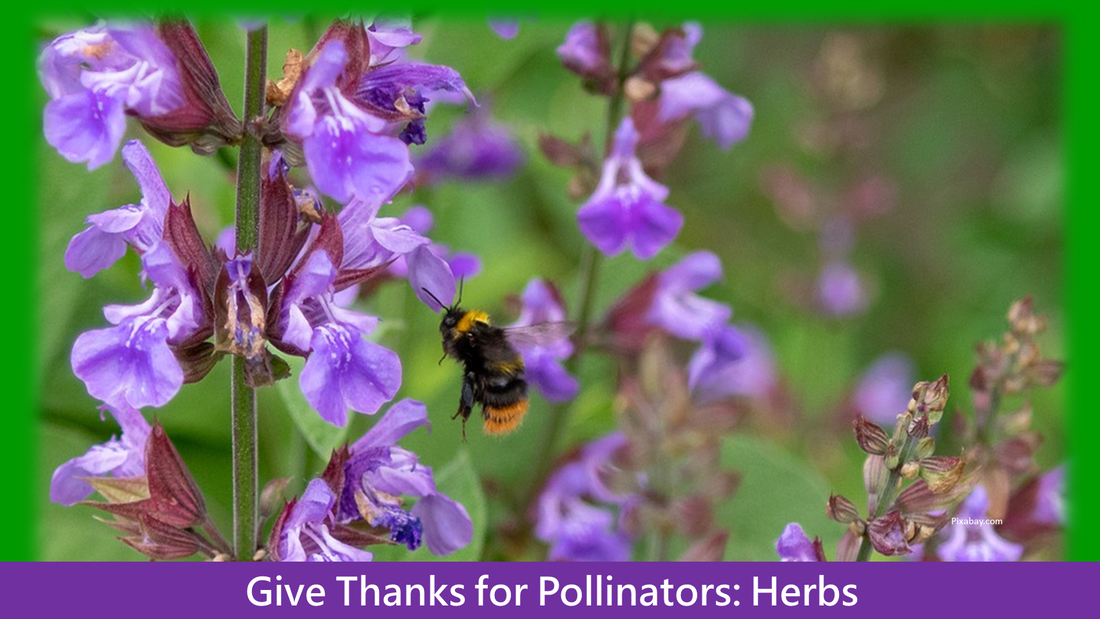Are you going…to have tasty seasoning for your turkey and stuffing? Parsley, sage, rosemary and thyme are just the ticket, and we enjoy their fragrant leaves and stems. Their tiny flowers are often overlooked by us—but they’re a feast for our pollinator friends!
Sage -- it may or may not make you wiser, but Thanksgiving dinner wouldn’t taste the same without it. Salvia officinalis is a favorite of bees and hummingbirds. Sage flowers feature a unique pollination mechanism called a “staminal lever”. When a pollinator probes the back of the flower in search of nectar, a seesaw-type structure tilts the pollen-filled (male) anther down to deposit its load on head or beak. When the pollinator visits the next flower, the (female) stigma will be the first part of the flower to touch the pollinator and will receive the pollen from the previous flower.
Rosemary — the wonderfully aromatic Salvia Rosmarinus is enjoyed by a vast array of pollinators, including mason, bumble, mining and honey bees, nectar-feeding flies, and butterflies. Its long blooming window (early spring through summer) make it a reliable and valuable food source for the pollinator garden, as well as a savory addition to our meals.
Thyme — lemon, English, silver, French, oregano---the list of Thymus varieties goes on and on! But bees and butterflies have plenty of time for thyme in the late spring and summer, when the tiny white-to-purple blooms appear. Let’s bee thankful!
---- Lisa Schneider
Photo Credit: Pixabay.com


 RSS Feed
RSS Feed